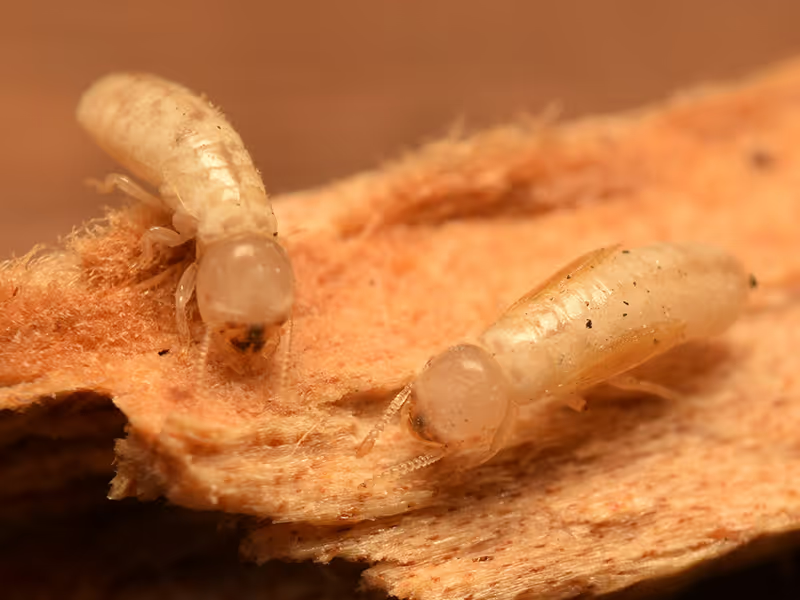Drywood termites are wood-destroying insects that live inside dry wood, including framing, furniture, and decorative trim. Unlike subterranean termites, they don’t need soil to survive, which makes them especially difficult to detect. In San Diego’s warm, dry climate, these pests thrive and can cause serious structural damage over time if left untreated.

Adult drywood termites range from light brown to dark brown and measure about ⅜ to 1 inch long. Winged swarmers, often the first sign of an infestation, have long, transparent or smoky-gray wings that extend well past their bodies.
Drywood termites do not require contact with soil or moisture and can live entirely within dry, structural wood, while subterranean termites nest in the soil and need more moisture.
Look for these warning signs:
Exposed, untreated wood, cracks or gaps in exterior wood, and warm, dry weather typical of San Diego can all attract drywood termite activity.
Common hiding spots include:
Drywood termites are generally less aggressive than some other termite species. They tend to eat through wood more slowly and usually form smaller colonies, meaning the damage takes longer to show up.
Even a slow infestation can lead to serious issues over time. If the damage occurs in the wrong place—like around your home’s foundation or support beams—it can weaken the structure and lead to costly repairs. So, if you spot signs of drywood termites, it’s best to take action sooner rather than later.
Drywood termites live inside the wood they infest, which makes them much harder to reach with DIY treatments. Over-the-counter sprays or foams only work on visible areas and rarely penetrate deep enough to eliminate entire colonies. Professional pest control ensures proper identification, appropriate treatment, and long-term prevention.
Treatment options typically include spot treatments for smaller infestations, whole-home fumigation for more widespread problems, and preventive wood treatments to keep termites from returning. For the best results, give Harbor Pest Control a call. We’ve been helping San Diego homeowners protect their properties from drywood termites since 1948.
Yes. Whole-structure fumigation requires residents (and pets) to vacate the property temporarily for safety.
Seal up cracks in exterior wood, keep exposed wood painted or sealed, and get rid of any infested items as soon as possible. It’s also a good idea to schedule regular termite inspections with a local pro so you can catch any problems early.





Helpful Tips & Info